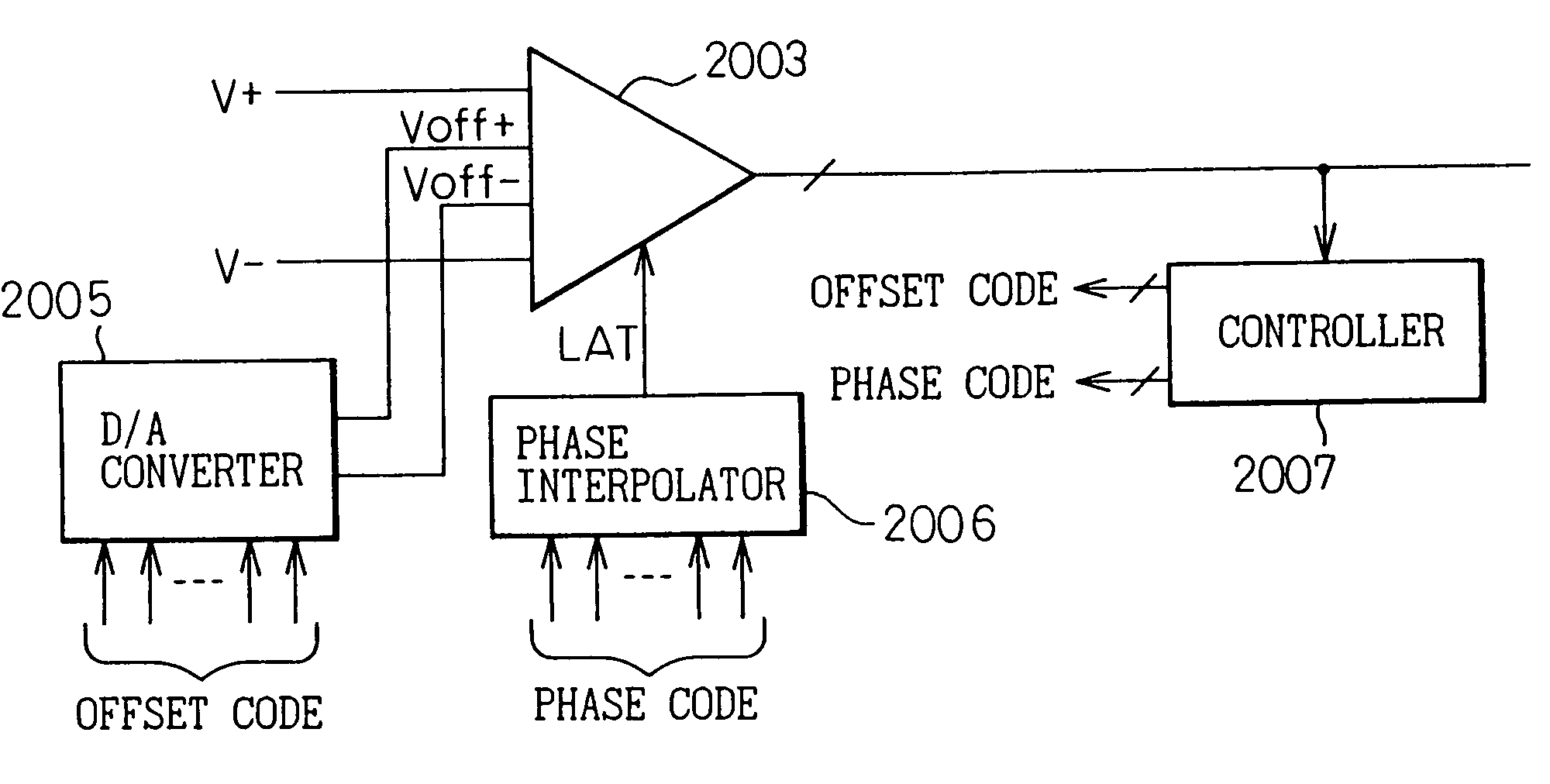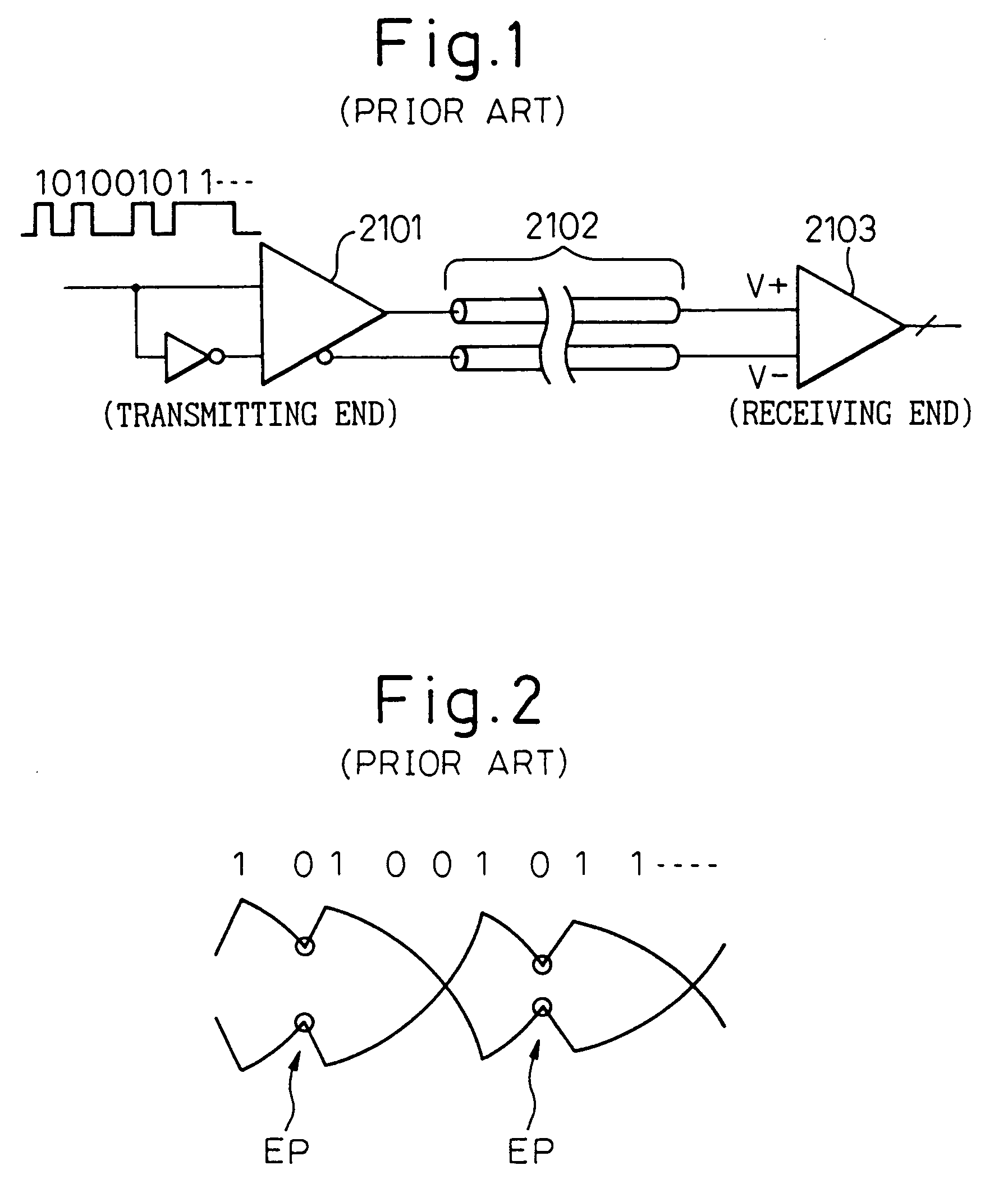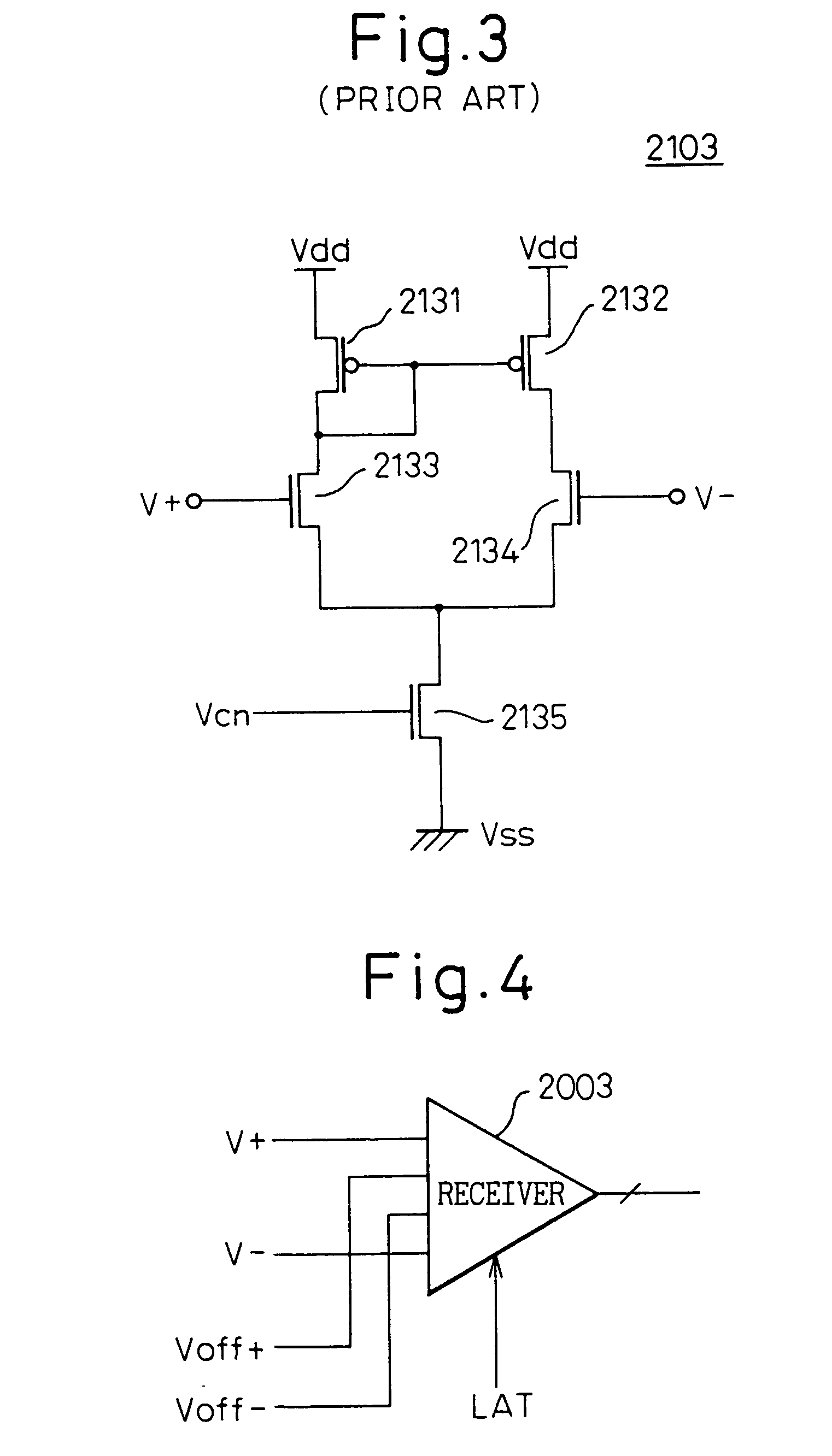Receiver, transceiver circuit, signal transmission method, and signal transmission system
a transceiver circuit and signal transmission technology, applied in logic circuit coupling/interface arrangement, dc level restoring means or bias distortion correction, instruments, etc., can solve the problem of slow signal transmission between a main storage device such as a dram and a processor, which is becoming a bottleneck impeding computer performance improvement, etc. problem, to achieve the effect of optimizing transmission/reception parameters and enhancing receiver sensitivity
- Summary
- Abstract
- Description
- Claims
- Application Information
AI Technical Summary
Benefits of technology
Problems solved by technology
Method used
Image
Examples
first embodiment
[0130]FIG. 7 is a circuit diagram showing a receiver as a first embodiment according to the first mode of the present invention; the receiver 2003 of FIG. 6 is shown here. In FIG. 7, reference numerals 2031 and 2032 are P-channel MOS transistors (PMOS transistors), 2033 to 2038 are N-channel MOS transistors (NMOS transistors), and 2039 is a decision circuit (latch circuit). Here, reference character Vcn represents a bias voltage applied to the gates of the transistors 2035 and 2038.
[0131]As shown in FIG. 7, the receiver 2003 comprises a preamplifier, which includes differential pair transistors 2033 and 2034 for application of input signals (input voltages V+ and V−) and differential pair transistors 2036 and 2037 for application of offset signals (offset voltages Voff+ and Voff), and a decision circuit (regenerative latch circuit) 2039 which makes a decision on the output of the preamplifier. More specifically, the positive logic input signal V+ is applied to the gate of one transi...
second embodiment
[0133]FIG. 8 is a block circuit diagram showing a receiver as a second embodiment according to the first mode of the present invention. In FIG. 8, reference numeral 2004 is a D / A converter for converting a digital offset code into analog form for output.
[0134]As shown in FIG. 8, the second embodiment differs from the first embodiment shown in FIG. 7 by the inclusion of a means for increasing or decreasing the offset level (offset value: offset voltage). More specifically, while applying, for example, a test pattern repeatedly in a periodic fashion, the offset value is varied in incremental steps from a minimum value toward a maximum value using the D / A converter 2005, to observe where the decision value changes from a 0 to a 1 or vice versa. With this configuration, the signal value (V+, V−) applied to the receiver (decision circuit) 2003 can be found with an accuracy equivalent to the resolution of the D / A converter 2005, and analog-like values of the received signal (the level of ...
third embodiment
[0137]FIG. 10 is a block circuit diagram showing a receiver as a third embodiment according to the first mode of the present invention. In FIG. 10, reference numeral 2006 is a phase interpolator, and 2007 is a controller.
[0138]As is apparent from the comparison between FIGS. 8 and 10, the third embodiment includes, in addition to the above-described configuration of the second embodiment, a means (phase interpolator 2006) for shifting the receive timing (decision timing) relative to the received signal (input signal). Various known configurations can be employed for the phase interpolator 2006.
[0139]The receiver 2003 (the decision circuit 2039) operates, for example, at the rising edge of a timing pulse LAT supplied from the phase interpolator 2006. The phase code applied to the phase interpolator 2006 is controlled, for example, by a 6-bit digital signal from a clock recovery circuit (not shown) during usual signal reception, but is controlled by a signal supplied from a separate c...
PUM
 Login to View More
Login to View More Abstract
Description
Claims
Application Information
 Login to View More
Login to View More - R&D
- Intellectual Property
- Life Sciences
- Materials
- Tech Scout
- Unparalleled Data Quality
- Higher Quality Content
- 60% Fewer Hallucinations
Browse by: Latest US Patents, China's latest patents, Technical Efficacy Thesaurus, Application Domain, Technology Topic, Popular Technical Reports.
© 2025 PatSnap. All rights reserved.Legal|Privacy policy|Modern Slavery Act Transparency Statement|Sitemap|About US| Contact US: help@patsnap.com



